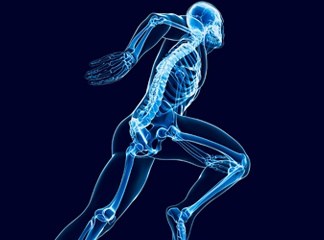Introduction
Experiencing painful joints can be a daunting reality for many. The discomfort can hinder daily activities, affect mood, and diminish quality of life. If you’re tired of relying on medications or are wary of surgical options, you might be grappling with the question: Is there a better way to find relief? Enter osteopathy—a holistic approach that focuses on the body's ability to heal itself. In this article, we'll explore how an osteopath can provide relief from joint pain without resorting to surgery.
Painful Joints? Discover How an Osteopath Can Provide Relief Without Surgery
Osteopathic medicine emphasizes a whole-person approach to healthcare. An osteopath—or osteopathic doctor—utilizes techniques grounded in the understanding of biomechanics, pain management, and the interrelationship between your body's structures and functions. Are you curious about how these professionals operate? Let’s dive deeper into their methods and philosophies.
What is Osteopathy?
Osteopathy is a branch of medicine that focuses on treating the body as a whole rather than just addressing isolated symptoms. It operates under the belief that all parts of the body are interconnected and that dysfunction in one area can lead to pain or problems elsewhere.
History of Osteopathy
The roots osteopathic medicine of osteopathy trace back to the late 19th century when Dr. Andrew Taylor Still founded it as a response to traditional medical practices. He believed in treating patients using hands-on techniques rather than invasive procedures.
Principles of Osteopathic Medicine
The Body is a Unit: Every system within your body is interconnected. Body Has Self-Healing Mechanisms: The body possesses inherent abilities to heal itself. Structure and Function are Interrelated: How our bones, joints, and muscles work together affects overall health. Rational Treatment: Treatment should be based on understanding these principles.How Does an Osteopath Diagnose Joint Pain?
When visiting an osteopathic doctor for painful joints, what should you expect during your initial consultation?
Comprehensive Assessment
An osteopath will conduct a thorough assessment, which includes:
- A detailed medical history A physical examination Functional movement assessments
By assessing your posture, mobility, and any pain points in your spine or joints, the osteopath gains insights into underlying issues.
Identifying Causes of Joint Pain
Understanding that joint pain can stem from various factors—such as injuries, degenerative diseases like arthritis, or even lifestyle choices—is crucial for effective treatment planning.
Treatment Techniques Used by Osteopaths
What kind of treatments do osteopaths employ to alleviate joint pain?
Manual Therapy Techniques
Soft Tissue Manipulation: This technique involves kneading muscles and soft tissues to relieve tension. Joint Mobilization: Gentle movements are applied to improve joint function. Muscle Energy Techniques: Patients use their muscles against resistance provided by the practitioner to restore normal function.Other Treatment Modalities
- Exercise Prescription: Tailored exercise programs help strengthen muscles around painful joints. Lifestyle Counseling: Dietary advice and stress management strategies enhance overall well-being.
Benefits of Seeing an Osteopath for Joint Pain Relief
Curious about why more people are turning towards osteopathy for joint pain relief?
Non-Invasive Approach: No need for surgery or heavy medications! Holistic Perspective: Focuses on treating the root cause rather than just symptoms. Personalized Care Plans: Treatments are tailored specifically to individual needs. Improved Mobility: Many patients experience enhanced flexibility and range of motion after treatment.
Is Osteopathy Safe for Everyone?
While osteopathic treatments are generally safe for most individuals, certain precautions may apply:
Who Should Consult an Osteopath?
- Individuals suffering from chronic joint pain Athletes needing rehabilitation from injuries Those looking for preventative care
Conditions That May Require Caution
- Severe osteoporosis Advanced cancer involving bone metastases Certain cardiovascular conditions
Painful Joints? Discover How an Osteopath Can Provide Relief Without Surgery - Real Patient Experiences
Have real patients found success with osteopathic treatments?
Many testimonials highlight significant improvements in their quality of life after consulting with an osteopathic doctor:

“I was skeptical at first but after just a few sessions focusing on my spine and joints with my osteopath at North Texas Musculoskeletal Medicine, I feel like I’ve regained my freedom!” – Sarah T., patient

FAQs About Osteopathy and Joint Pain
What qualifications does an osteopath have?- An osteopath must complete a degree in osteopathic medicine followed by clinical training.
- This varies by individual; some may find relief within a few visits while others may require ongoing treatment.
- Many insurance plans do cover visits to licensed osteopathic doctors; it’s best to check with your provider.
- Yes! An osteopath can serve as your primary healthcare provider or work alongside other specialists as needed.
- Most patients experience minimal downtime; however, some may feel sore initially as their body adjusts.
- Risks are generally low; however, always discuss any concerns with your practitioner beforehand.
Conclusion
If you're battling painful joints and seeking alternatives beyond surgery or medications, exploring how an osteopath can provide relief might be worth considering! Their focus on holistic care through manual manipulation techniques offers promising avenues toward alleviating discomfort while promoting long-term health benefits.
In summary, embracing osteopathy not only addresses immediate symptoms but also paves the way for improved function and wellness throughout your entire body—because when it comes down to it, we all deserve to move freely without pain hindering our daily lives! So why wait? Reach out today and discover how North Texas Musculoskeletal Medicine can get you back on track!